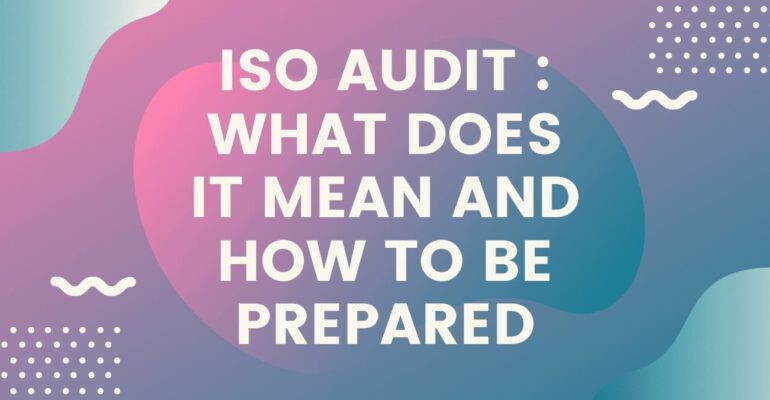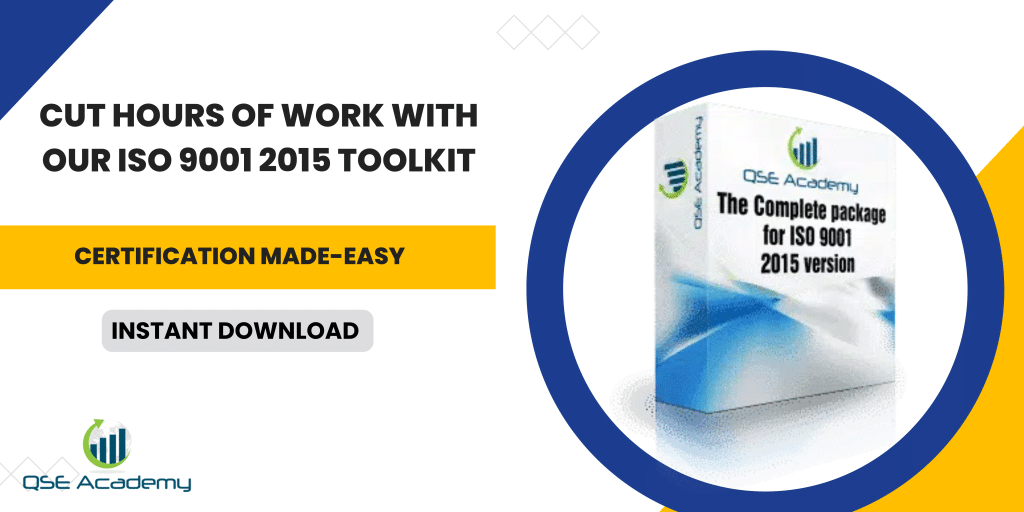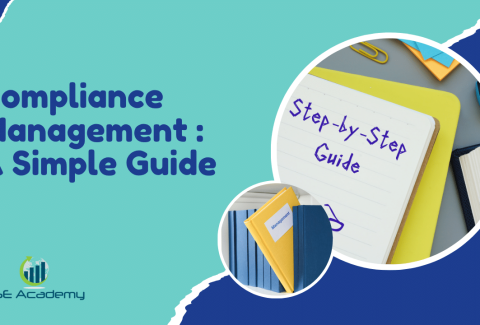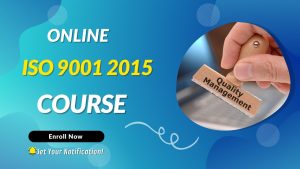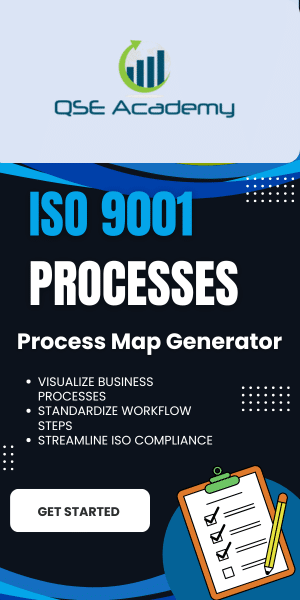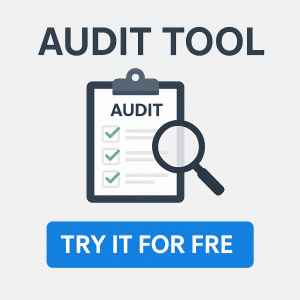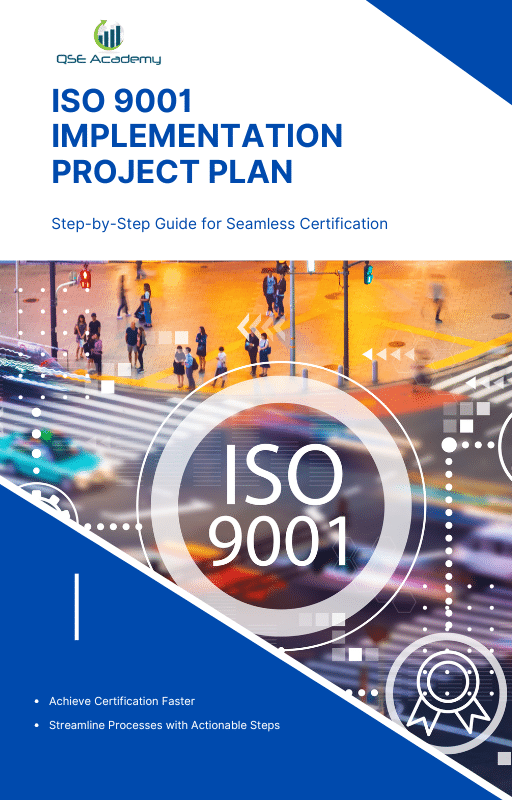ISO audit : What does it mean and how to be prepared?
Last Updated on October 13, 2025 by Hafsa J.
ISO Audit: What Does It Mean and How to Be Prepared
Have you ever heard the term ISO audit and wondered what it’s all about? Maybe you’ve even thought, “Is this something my business really needs?” Don’t worry—you’re not alone! For many businesses, the idea of an ISO audit can feel a little intimidating at first, but once you understand it, it’s actually a fantastic opportunity to improve and grow.
In simple terms, an ISO audit is a detailed review of your business processes, conducted to ensure you’re meeting the standards required for ISO certification. Think of it as a health check for your organization—a way to confirm that your systems and procedures are running smoothly, consistently, and in line with international benchmarks.
So why is this important? Well, maintaining your ISO certification isn’t just about having a fancy certificate on the wall. It’s about showing customers, partners, and stakeholders that your business is committed to quality, efficiency, and continual improvement. And the ISO audit plays a key role in proving that commitment.
In this article, we’ll explore exactly what an ISO audit involves, why it matters, and how you can prepare for it like a pro. By the end, you’ll feel confident and ready to take your business to the next level. Let’s dive in!
What is an ISO Audit?
Let’s start with the basics: what exactly is an ISO audit, and why does it matter? At its core, an ISO audit is a structured evaluation of your business processes, systems, and documentation to ensure they meet the requirements of a specific ISO standard, like ISO 9001 for quality management or ISO 14001 for environmental management. Think of it as a checkpoint to confirm that everything in your organization is running as it should be.
Now, there are a few different types of ISO audits, and each plays an important role in helping your business achieve and maintain ISO certification. Let’s break them down:
1. Internal Audit
An internal audit is like your practice run. It’s conducted by someone within your organization (or an external consultant, if needed) to check whether your systems and processes align with the ISO standard. The goal here isn’t to “pass” or “fail”—it’s to identify gaps and areas for improvement.
For example, let’s say you’re working toward ISO 9001 certification. During an internal ISO audit, you might discover that while your quality control processes are great, your record-keeping could use some work. Catching these things early helps you address them before the official audit.
2. External Audit
The external ISO audit is the real deal. This is when an accredited certification body comes in to assess your organization and determine whether you meet the ISO standard you’re aiming for. The external auditor will review your documentation, observe your processes, and even chat with employees to ensure everything is up to par.
If your organization meets the requirements, congratulations—you’ll earn your ISO certification! If there are any non-conformities, don’t panic. The auditor will provide feedback and give you the chance to make corrections.
3. Surveillance Audit
Once you’ve achieved ISO certification, the work doesn’t stop there. To maintain your certification, you’ll need to undergo regular surveillance audits. These are conducted by the certification body to ensure you’re still meeting the standard and making continuous improvements.
Think of surveillance audits as periodic check-ins to keep your organization on track. They’re a great way to ensure your processes don’t slip over time and that you’re always operating at your best.
Why is an ISO Audit Important?
So, why go through all this effort? Because an ISO audit is much more than just a formality. It’s a way to ensure your business is running smoothly, consistently, and efficiently. Plus, passing an ISO audit builds trust with customers and stakeholders, showing them that your organization is committed to high standards.
In the next section, we’ll dive into why these audits are so crucial and how they drive continuous improvement in your business. Spoiler alert: they’re worth the effort! Let’s keep going.
Why Are ISO Audits Important?
So, why does an ISO audit matter so much? Can’t businesses just focus on doing good work and leave it at that? Well, while delivering great products or services is essential, an ISO audit goes a step further by ensuring that your business operates efficiently, consistently, and in line with global standards. It’s not just about compliance—it’s about creating a stronger, more competitive organization. Let’s break it down.
1. Ensures Compliance with ISO Standards
At its core, an ISO audit is all about checking whether your business complies with the ISO standard you’re working toward. This ensures that every process, policy, and procedure in your organization aligns with the requirements of the certification.
For instance, if you’re pursuing ISO 14001 for environmental management, the audit will confirm that you’re meeting sustainability goals, reducing waste, and complying with environmental regulations. This compliance isn’t just good for certification—it’s great for your reputation and can even protect you from legal or regulatory issues.
2. Drives Continuous Improvement
One of the best things about an ISO audit is that it doesn’t just evaluate where you are—it helps you get better. By identifying gaps, inefficiencies, or inconsistencies, the audit gives you the tools to improve your processes and make your business stronger.
For example, during an internal ISO audit, you might discover that your team is spending too much time on manual tasks that could be automated. Fixing this not only helps you meet the standard but also saves you time and resources in the long run. It’s like a built-in opportunity to level up your business operations.
3. Builds Trust with Customers and Stakeholders
When you pass an ISO audit, it’s not just your internal team that benefits—it’s your customers and stakeholders too. ISO certification is a globally recognized badge of quality, and the audit process ensures you’ve earned it. This builds trust and confidence in your organization.
Think about it: if you were choosing between two suppliers, and one of them had ISO certification while the other didn’t, which would you trust more? Passing an ISO audit shows the world that your business is serious about quality, safety, and efficiency, which can give you a competitive edge.
4. Encourages Accountability
An ISO audit also creates a culture of accountability within your organization. By regularly reviewing your processes and identifying areas for improvement, your team becomes more proactive and focused on maintaining high standards. Everyone knows their role in meeting the certification requirements, which leads to better collaboration and results.
The Big Picture
In short, an ISO audit is about so much more than just ticking a box for certification. It’s about creating a business that’s efficient, reliable, and trusted by customers and partners alike. By ensuring compliance, driving improvement, and building trust, ISO audits help you stay ahead of the competition and deliver the best possible outcomes.
In the next section, we’ll explore the challenges businesses often face during an ISO audit and how you can overcome them with ease. Let’s dive into what to watch out for and how to tackle it head-on!
Common Challenges During an ISO Audit
Preparing for an ISO audit can feel like a big task, especially if it’s your first time. While the process is straightforward when you’re organized, there are a few common challenges businesses face along the way. The good news? With the right approach, these obstacles are completely manageable. Let’s talk about what could trip you up during an ISO audit and how to overcome these hurdles like a pro.
1. Documentation Issues
One of the most common challenges in an ISO audit is missing or incomplete documentation. ISO standards require clear records of your processes, policies, and procedures. If your documentation isn’t up to date or doesn’t reflect how your business operates, it can create gaps during the audit.
How to Fix It:
Start by conducting a thorough review of your documentation well in advance of the audit. Ensure that everything from employee training records to operational procedures is accurate and current. If you’re unsure where to begin, creating a checklist based on the specific ISO standard can help you stay on track.
2. Unprepared Team Members
Another challenge businesses face is a lack of preparation among employees. Since auditors may interview staff during the ISO audit, it’s essential that everyone understands their roles and how they contribute to meeting the ISO standard. Unprepared team members can unintentionally create gaps or inconsistencies.
How to Fix It:
Training is key here. Hold sessions with your team to explain the purpose of the audit, the specific ISO standard you’re working toward, and how their responsibilities fit into the bigger picture. This not only prepares them for the audit but also helps create a culture of accountability and quality.
3. Process Gaps
An ISO audit is designed to uncover inconsistencies or inefficiencies in your processes. If your business doesn’t have standardized procedures, or if you’re not following the ones you’ve documented, it can lead to findings of non-conformity.
How to Fix It:
Conduct internal audits before the official ISO audit to identify any gaps or weak spots in your processes. Use these practice audits as an opportunity to fine-tune your operations and address any inconsistencies. Remember, the goal isn’t perfection—it’s continuous improvement.
4. Overlooking Minor Details
Sometimes, it’s the small things that trip businesses up during an ISO audit. Minor non-conformities, like outdated records or missing signatures, can add up and create unnecessary stress.
How to Fix It:
Pay attention to the details during your preparation. Assign someone to double-check documentation, ensure all forms are properly completed, and verify that everything is aligned with the ISO standard. A second set of eyes can make all the difference.
5. Time Constraints
Let’s be honest—running a business is already time-consuming, and preparing for an ISO audit can feel like just one more thing on your plate. Without proper planning, you might find yourself scrambling at the last minute.
How to Fix It:
Start your preparation early and break the process into manageable steps. Create a timeline leading up to the audit, with clear deadlines for completing tasks like reviewing documentation, training staff, and conducting internal audits. By spreading out the work, you’ll reduce stress and ensure nothing gets overlooked.
Turning Challenges into Opportunities
While these challenges might sound daunting, remember that every obstacle is also an opportunity to improve. An ISO audit isn’t about catching you out—it’s about helping your business grow stronger, more efficient, and better aligned with international standards. With the right preparation, you can turn potential roadblocks into stepping stones for success.
In the next section, we’ll dive into how you can prepare for an ISO audit like a pro, with actionable tips and strategies to make the process smooth and stress-free. Let’s keep going!
How to Prepare for an ISO Audit
Preparing for an ISO audit might sound like a big task, but with the right approach, it can be a smooth and rewarding process. Think of it as getting your house in order before hosting an important guest—it’s all about organization, attention to detail, and teamwork. Here’s how to prepare for an ISO audit like a pro.
1. Review Your Documentation
The first and most critical step in preparing for an ISO audit is ensuring your documentation is complete, accurate, and up-to-date. ISO standards often require businesses to maintain detailed records of processes, policies, and procedures. This documentation serves as proof that your organization is meeting the required standards.
Tips for Success:
- Create a checklist of all the documents required for your specific ISO standard (e.g., ISO 9001 or ISO 14001).
- Review your records to ensure they’re current and properly organized.
- Look for any gaps or inconsistencies and address them before the audit.
2. Conduct Internal Audits
An internal audit is like your dress rehearsal for the real thing. It helps you identify potential gaps, weaknesses, or areas for improvement before the official ISO audit. Think of it as a chance to fine-tune your processes and ensure everything is running smoothly.
Tips for Success:
- Schedule regular internal audits in the months leading up to your ISO audit.
- Involve team members from different departments to get a well-rounded view of your operations.
- Use the findings from your internal audit to make any necessary adjustments or corrections.
3. Train Your Team
Your employees play a crucial role in passing an ISO audit, so it’s important to make sure they’re prepared. Auditors may interview staff during the process to understand how they contribute to meeting ISO standards. If your team is informed and confident, the audit will go much more smoothly.
Tips for Success:
- Hold training sessions to explain the purpose of the ISO audit and what to expect.
- Ensure employees understand their roles and responsibilities related to the ISO standard.
- Encourage open communication so team members can ask questions and clarify any doubts.
4. Address Non-Conformities
If your internal audits reveal any non-conformities (areas where your business doesn’t fully meet the ISO standard), don’t panic. The goal of preparing for an ISO audit is to identify and fix these issues before the official evaluation.
Tips for Success:
- Prioritize addressing high-risk non-conformities first.
- Develop an action plan for resolving each issue, with clear timelines and responsibilities.
- Document the corrective actions you’ve taken, as auditors will likely review these during the audit.
5. Create an Audit Checklist
An ISO audit involves many moving parts, so having a checklist can help you stay organized and ensure nothing gets overlooked. This checklist should cover everything from documentation to team training and internal audits.
Tips for Success:
- Break the checklist into sections based on the requirements of your ISO standard.
- Assign specific tasks to team members and set deadlines for completion.
- Use the checklist to track your progress and identify any last-minute gaps before the audit.
6. Plan for the Audit Day
When the big day arrives, you want to be ready to put your best foot forward. Being prepared and organized shows the auditor that your business is committed to maintaining ISO standards.
Tips for Success:
- Have all your documentation ready and easily accessible.
- Assign a point person to coordinate with the auditor and answer any questions.
- Ensure your team knows the audit schedule and is available if needed.
Final Thoughts on Preparation
Preparing for an ISO audit doesn’t have to be stressful—it’s all about taking it step by step and staying organized. With thorough documentation, regular internal audits, and a well-prepared team, you’ll be in great shape to pass with flying colors.
In the next section, we’ll look at what to expect during the actual ISO audit and how to handle the process with confidence. Let’s get ready to tackle audit day!
What to Expect During an ISO Audit
Alright, so you’ve done the prep work, reviewed your documentation, trained your team, and tackled any gaps you found during internal audits. Now it’s time for the big day: the ISO audit itself. But what exactly happens during an ISO audit? Let me walk you through the process so you can feel confident and prepared.
1. The Opening Meeting
The ISO auditor will kick things off with an opening meeting. This is essentially a “get to know you” session where the auditor outlines what will happen during the audit, what areas they’ll be focusing on, and how long the process will take.
What You Can Do:
- Make sure the key personnel from your organization are present for this meeting.
- Use this time to clarify any last-minute questions or concerns.
- Remember, the opening meeting sets the tone—be professional, organized, and open to feedback.
2. Review of Documentation
One of the first things the auditor will do is review your documentation. They’ll want to see that all the necessary policies, procedures, and records are in place and up to date. This step is critical because your documentation demonstrates that your business is aligned with the ISO standard.
What You Can Do:
- Have all required documents neatly organized and easily accessible.
- Be prepared to explain how your documentation reflects your business processes.
- If the auditor asks for clarification, provide clear and concise answers.
3. On-Site Assessment
Next comes the on-site assessment, where the auditor observes how your business operates in real life. They’ll walk through your facilities, review your processes, and even chat with employees to ensure everything matches what’s outlined in your documentation.
For example, if you’re undergoing an ISO 9001 audit, the auditor might check your quality control processes to confirm they’re being followed consistently.
What You Can Do:
- Ensure your team knows the auditor may ask them questions about their roles.
- Keep your operations running as usual—there’s no need to put on a show! The auditor is looking for authenticity and consistency.
- Be transparent. If something isn’t perfect, explain what steps you’re taking to improve.
4. Employee Interviews
During the ISO audit, the auditor may interview employees to understand how they contribute to meeting ISO standards. These interviews are usually brief and focused on specific processes or roles.
What You Can Do:
- Make sure your team feels confident and informed about their responsibilities.
- Encourage employees to answer questions honestly—auditors appreciate straightforwardness.
- If an employee doesn’t know an answer, it’s okay! They can direct the auditor to someone who does.
5. Identifying Non-Conformities
If the auditor finds areas where your business doesn’t fully meet the ISO standard, they’ll flag these as non-conformities. Don’t panic—this is a normal part of the process, and it’s an opportunity to improve. Non-conformities are categorized as either minor or major, depending on their impact.
What You Can Do:
- Take note of any non-conformities the auditor identifies.
- Ask for clarification if needed, so you understand exactly what needs to be addressed.
- Use the feedback to create a plan for corrective action.
6. The Closing Meeting
At the end of the ISO audit, the auditor will hold a closing meeting to go over their findings. They’ll summarize what went well, highlight any non-conformities, and explain the next steps. If everything checks out, you’ll receive a recommendation for certification!
What You Can Do:
- Listen carefully to the auditor’s feedback.
- Ask questions to ensure you fully understand the findings and next steps.
- Celebrate your hard work—whether you pass on the first try or have a few things to fix, you’ve made huge progress!
Staying Calm and Confident
Remember, the ISO audit is not about perfection—it’s about demonstrating your commitment to meeting standards and improving your business. Auditors aren’t there to “catch you out”; they’re there to help you succeed. By staying calm, organized, and open to feedback, you’ll navigate the process with ease.
In the next section, we’ll share some inspiring success stories of businesses that aced their ISO audits and how the experience transformed their operations. Stay tuned—you’re almost there!
Real-Life Success Stories: Businesses That Aced Their ISO Audit
Hearing about other businesses’ experiences can be incredibly motivating, especially when it comes to something as significant as an ISO audit. The truth is, many companies have used the audit process as a springboard to improve their operations, build trust with customers, and achieve long-term success. Let me share a few inspiring stories of businesses that nailed their ISO audit and reaped the rewards.
1. The Small Manufacturer That Went Global
Take Linda, the owner of a small manufacturing company. For years, Linda’s team had been working hard to produce high-quality components, but they struggled to win contracts with international clients. Most of these potential partners required ISO 9001 certification, which meant going through the ISO audit process.
Linda decided to go for it. Her team reviewed their documentation, streamlined their production processes, and trained employees on ISO standards. During the audit, the external auditor highlighted how well-organized their operations were, and within weeks, the company earned its ISO certification.
The result? Linda’s business quickly gained new clients overseas, growing revenue by 40% in just one year. The ISO audit wasn’t just a hurdle—it was the key to global success.
2. The Logistics Company That Boosted Efficiency
Now let’s talk about James, who runs a logistics company. His business faced frequent delivery delays, which hurt customer satisfaction. Frustrated with the inefficiencies, James decided to pursue ISO 14001 certification to improve operational sustainability and reduce waste.
The ISO audit process helped James and his team identify bottlenecks in their supply chain and implement better resource management practices. When the auditors arrived, they were impressed by the dramatic improvements in efficiency and compliance.
After passing the ISO audit, the company not only improved delivery times but also saved thousands of dollars in operating costs. Customers took notice of the changes, and the business’s reputation skyrocketed.
3. The Tech Startup That Gained Investor Trust
Finally, there’s Sarah, who founded a tech startup specializing in data security. Sarah wanted to attract investors and secure contracts with large corporations, but many potential clients required ISO 27001 certification for information security management.
Sarah viewed the ISO audit as an opportunity to solidify her company’s systems. Her team worked hard to improve cybersecurity protocols, document procedures, and train employees. The audit process highlighted a few minor gaps, but Sarah’s team quickly addressed them, earning their certification shortly after.
The impact was immediate. Investors were impressed by the company’s commitment to high standards, and several large corporations signed contracts within months. For Sarah, the ISO audit wasn’t just a test—it was the foundation for scaling her business.
What These Stories Teach Us
In each of these cases, the ISO audit wasn’t just about passing—it was about transformation. These businesses used the process to identify areas for improvement, make meaningful changes, and position themselves as leaders in their industries. Whether it’s gaining global clients, improving efficiency, or building trust, the benefits of passing an ISO audit extend far beyond the certificate itself.
Your Success Story Awaits
If these stories have inspired you, remember that your business could be next. The ISO audit process might feel challenging at first, but with the right preparation, it can become a game-changing moment for your organization. In the final section, we’ll wrap things up with some key takeaways and a call to action to get you started on your own ISO audit journey. Let’s finish strong!

make ISO standards less intimidating and more approachable for everyone.
Whether it’s ISO 9001, ISO 22000, or the cosmetics-focused ISO 22716, I’ve spent my career
turning complex jargon into clear, actionable steps that businesses can actually use.
I’m not here to call myself an expert—I prefer “enthusiast” because I truly love what I do.
There’s something incredibly rewarding about helping people navigate food safety and quality management systems
in a way that feels simple, practical, and even enjoyable.
When I’m not writing about standards, you’ll probably find me playing Piano 🎹, connecting with people, or diving into my next big project💫.
I’m an engineer specialized in the food and agricultural industry
I have a Master’s in QHSE management and over 12 years of experience as a Quality Manager
I’ve helped more than 15 companies implement ISO 9001, ISO 22000, ISO 22716, GMP, and other standards
My clients include food producers, cosmetics manufacturers, laboratories, and service companies
I believe quality systems should be simple, useful, and efficient.

